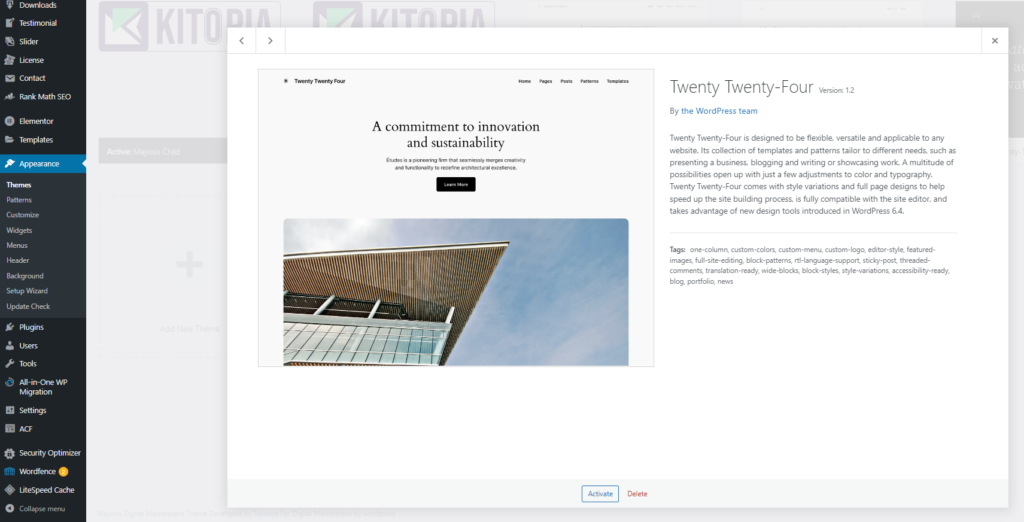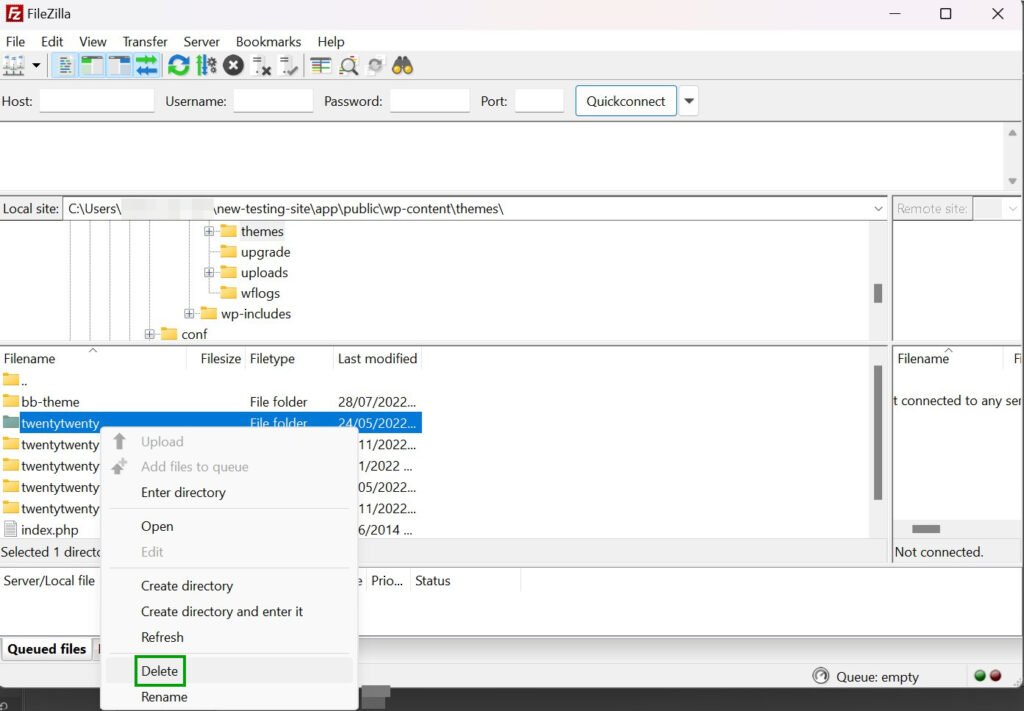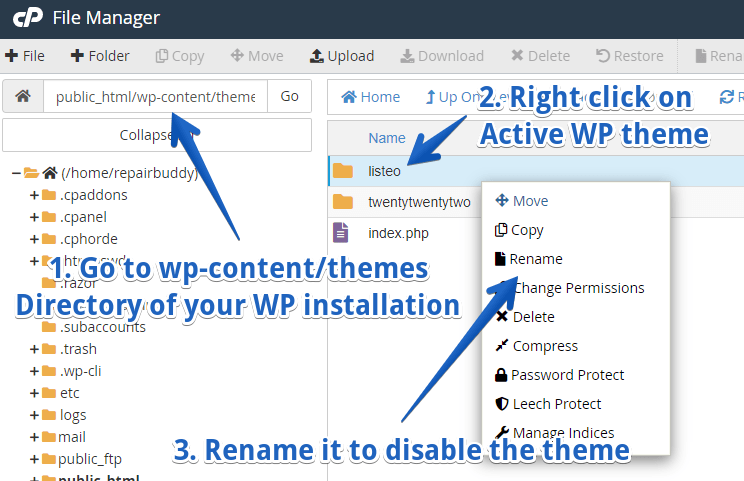
When working with WordPress, themes play a crucial role in determining the overall look, feel, and functionality of your website. However, there may come a time when you want to switch themes or deactivate the one currently in use. In this detailed guide, we will walk you through the process of deactivating a theme in WordPress, along with reasons why you might want to do this and how to manage inactive themes effectively.
Understanding Themes in WordPress
Themes in WordPress determine the visual appearance of your website. They control layout, colors, fonts, and overall design. Users can install multiple themes but can only activate one at a time. When you deactivate a theme, it simply means you are switching to another theme or removing the active theme without deleting it from your WordPress installation.
Why Deactivate a WordPress Theme?
Before we get into the steps of deactivating a theme, it’s essential to understand why you may want to do so. Here are a few common reasons:
- Switching to a New Theme: You may want to change the look of your website by switching to a different theme that better suits your needs or provides more advanced features.
- Troubleshooting Issues: Sometimes, themes may cause compatibility issues or slow down your website. Deactivating the current theme can help you troubleshoot and identify performance or functionality problems.
- Security: If you have themes installed that you are no longer using, it’s advisable to deactivate and delete them to reduce potential security risks.
How to Deactivate a Theme in WordPress: Step-by-Step Instructions
Here are 3 effective methods to do it:
✅Method 1: Deactivating a Theme via the WordPress Dashboard

The easiest and most user-friendly way to deactivate a theme is through the WordPress dashboard. Here’s how to do it:
👉Step 1: Log In to Your WordPress Admin Panel
- Visit
yourwebsite.com/wp-adminand enter your login credentials to access the admin panel.
👉Step 2: Navigate to the Themes Section
- Once logged in, hover over the Appearance tab in the left sidebar and click on Themes. This will take you to the themes management page.
👉Step 3: Activate a New Theme
- To deactivate your current theme, you need to activate another theme because WordPress requires one active theme at all times. Hover over the theme you want to activate and click the Activate button.
👉Step 4: Confirm Theme Deactivation
- Once the new theme is activated, the previous theme is automatically deactivated. You can now customize the new theme as needed.
✅Method 2: Deactivating a Theme via FTP (File Transfer Protocol)

If you can’t access your WordPress dashboard due to errors caused by the active theme, you can deactivate the theme by using an FTP client.
👉Step 1: Connect to Your Website via FTP
- Download and install an FTP client like FileZilla. Use your FTP credentials (provided by your web hosting provider) to connect to your website.
👉Step 2: Access the WordPress Themes Folder
- Once connected, navigate to your WordPress directory and go to
wp-content/themes/. This folder contains all the installed themes on your site.
👉Step 3: Rename the Active Theme Folder
- Find the folder for the active theme. Rename it by adding “-deactivated” or any other string to the folder name (e.g., change “astra” to “astra-deactivated”). This will force WordPress to deactivate the theme because it can no longer locate the folder.
👉Step 4: WordPress Reverts to Default Theme
- WordPress will automatically revert to a default theme (like Twenty Twenty-One) if the active theme is deactivated via FTP. You can now log in to your admin dashboard and activate another theme if needed.
✅Method 3: Deactivating a Theme via phpMyAdmin (Advanced Users)

For advanced users or in more complex troubleshooting cases, you can deactivate a theme via the WordPress database using phpMyAdmin.
👉Step 1: Log In to Your Hosting Control Panel
- Access your web hosting control panel (such as cPanel or Plesk) and open phpMyAdmin.
👉Step 2: Select Your WordPress Database
- In phpMyAdmin, find and select the database associated with your WordPress site. If you’re not sure which database to choose, check your WordPress wp-config.php file for the database name.
👉Step 3: Open the wp_options Table
- Inside the database, find the
wp_optionstable. This table stores various settings for your WordPress site, including the active theme.
👉Step 4: Locate the Active Theme
- In the
wp_optionstable, find the rows where theoption_nameistemplateandstylesheet. These rows indicate the active theme. Edit both rows and change the theme name to a default theme, such astwentytwentyone.
👉Step 5: Save Changes
- Save the changes, and the active theme will be replaced with the default theme. The previously active theme is now deactivated.
How to Manage Inactive Themes
After deactivating a theme, it’s important to properly manage any themes that remain on your site.
1. Delete Unused Themes
Even after deactivation, inactive themes can still pose a security risk, especially if they are outdated. To delete an unused theme:
- Go to Appearance > Themes.
- Hover over the inactive theme you want to remove.
- Click Theme Details, and in the bottom right corner, click the Delete button.
2. Keep a Backup Theme
Always keep one of WordPress’s default themes (like Twenty Twenty-One) installed as a backup. If anything goes wrong with your active theme, WordPress will automatically switch to this theme to ensure your site remains accessible.
3. Regularly Update Themes
Inactive themes should be updated regularly. If you plan to use them in the future, keeping them up to date ensures that they are secure and compatible with the latest version of WordPress.
💡Important Considerations
- Backup Your Site: Always back up your website before making changes to themes or other critical components.
- Check for Compatibility: Ensure that your new theme is compatible with your WordPress version and other plugins.
- Update Plugins: After changing themes, it’s a good idea to check and update your plugins for compatibility with the new theme.
FAQs: Deactivating WordPress Themes
Can I Switch Back to the Deactivated Theme?
Yes, once deactivated, a theme is still available for future use unless deleted. You can always reactivate it by going to Appearance > Themes and clicking the Activate button on the desired theme.
What Happens to My Website Content After Deactivating a Theme?
Deactivating a theme will not delete your website content. However, any theme-specific features, layouts, or customizations will be lost unless you reactivate the theme later. Always make sure to back up your site before making any significant changes.
Should I Delete a Deactivated Theme?
If you no longer plan to use a theme, it’s best to delete it. Deleting unused themes reduces clutter and eliminates potential security vulnerabilities.
Conclusion
Deactivating a theme in WordPress is a simple yet essential process, whether you’re switching designs or troubleshooting issues. From the WordPress dashboard to more advanced methods like FTP and phpMyAdmin, you have multiple options depending on your needs. Once deactivated, it’s important to properly manage your inactive themes to ensure your site remains secure and optimized.
For users seeking high-quality themes and plugins to take their WordPress site to the next level, platforms like Kitoopia offer a wide range of GPL-licensed products, including themes from top developers. At Kitoopia, you can find premium WordPress themes and plugins designed to enhance the functionality and aesthetics of your site.


